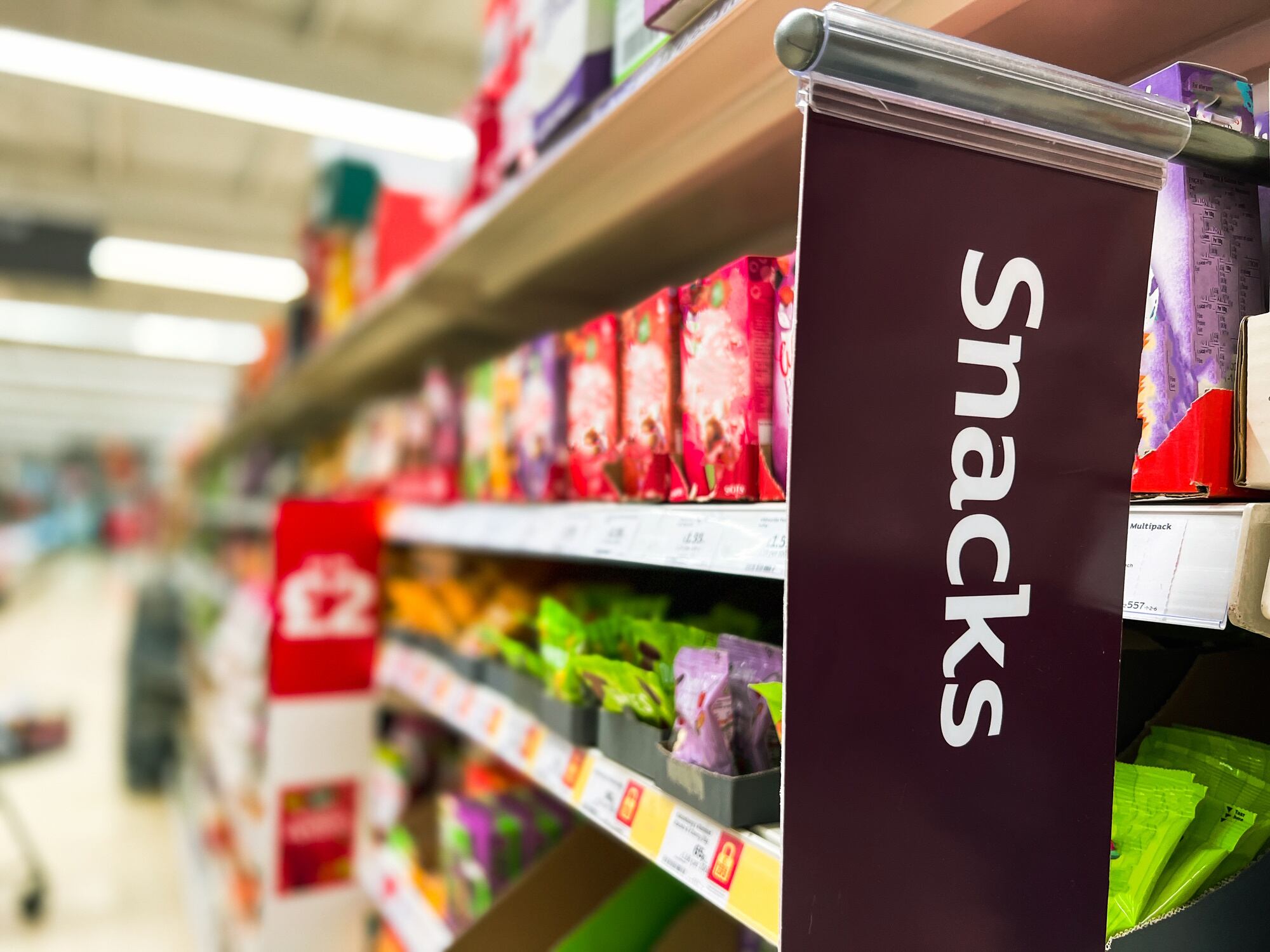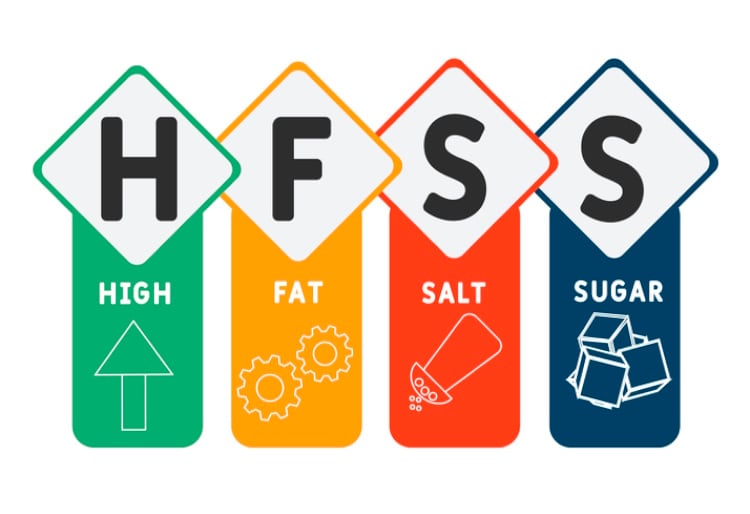The UK has rolled out some of the world’s strictest restrictions on HFSS products, using the Nutrient Profiling Model (NPM) to determine which foods are affected.
The NPM assesses products based on their content of energy, saturated fat, total sugars, and sodium, while also factoring in beneficial ingredients such as fruit, vegetables, nuts, fibre, and protein. A final score determines whether a product is classified as ‘less healthy’ and therefore subject to marketing and placement restrictions.
The rules - introduced in phases since 2022 - ban products that fail to meet the required criteria from prominent instore locations like checkouts and end-of-aisle displays. In October 2025, an advertising crackdown will take effect, blocking HFSS ads online and before 9pm on TV. Multi-buy promotions on HFSS products are also set to be scrapped.
The goal is to reduce the £6.5bn annual NHS bill for obesity-related healthcare by limiting exposure to less healthy foods, but the industry argues these changes are costly, restrictive and won’t necessarily change consumer habits.
Is reformulation enough?

A new report from Action on Salt and Sugar at Queen Mary University of London paints a worrying picture. Most savoury snacks on supermarket shelves still fail to meet the government’s ‘healthier’ criteria due to excessive salt and sugar levels.
The health watchdog’s analysis of more than 1,200 snack products found that 77% of crisps, 56% of nuts and 88% of popcorn - including some of the best-selling brands in the UK - still exceed the HFSS thresholds. Among crisps, 82% of cheese-flavoured varieties and 91% of meaty-flavoured crisps were classified as HFSS. When it comes to nuts, nearly 60% of honey-roasted and flavoured nut products failed to meet the healthier criteria, while over 90% of caramel-coated and chocolate-covered popcorn products exceeded sugar limits. These fall under the NPM’s ‘less healthy’ classification, meaning they will be banned from advertising on TV and online before 9pm starting in October 2025.
The report also highlighted significant variations in salt and sugar content across different brands, suggesting that many manufacturers could reduce levels without compromising on taste.
While popcorn is often marketed as a ‘better-for-you’ snack, the data shows that nearly one in three ready-to-eat popcorn products is saltier than a packet of cheese & onion crisps. Even worse, some flavoured varieties contain high amounts of sugar. Morrisons Market Street Toffee Flavour Popcorn, for instance, contains 59.1g of sugar per 100g, equivalent to more than seven teaspoons per serving - far exceeding the NHS-recommended daily sugar intake of 30g for adults.
Crisps continue to be a major culprit, with one in three products requiring a red (high) salt warning label. Among the worst offenders is Eat Real Lentil Chips Chilli & Lemon, which contains 3.6g of salt per 100g - saltier than seawater. Meanwhile, some flavoured nuts, which are naturally low in salt, have been made unnecessarily unhealthy through seasoning.
The report also revealed that many producers are failing to meet voluntary salt reduction targets. Despite having four years to reformulate, only eight companies have fully met the government’s recommended salt targets for savoury snacks, while another four brands achieved 95% compliance. At the other end of the spectrum, nine major snack companies failed to meet the targets for at least half their product portfolio.
According to Sonia Pombo, head of Impact and Research at Action on Salt, voluntary efforts by the food industry simply haven’t been enough. “It’s clear that voluntary efforts to improve food nutrition have largely fallen short. Yet this isn’t about feasibility, as some companies have already shown that reformulation is possible. It’s about time the government gets tough and implements mandatory targets with strong enforcement.”
Recipe for Change is pushing for government to get more involved. “The range of sugar and salt in the snacks surveyed here shows there’s plenty of scope to reduce these ingredients but while some companies are doing better, most are not incentivised to improve their products,” said campaign coordinator Kate Howard. “The public doesn’t believe companies will produce healthier food without government regulation and they’re currently being proved right.”
A ‘blunt instrument’ or necessary intervention?

The food and drink industry has pushed back hard against the HFSS rules, arguing they are too broad and fail to account for how products are consumed.
Kellogg’s attempted to challenge the restrictions in court in 2022, arguing the government hadn’t considered how cereals are typically eaten - with milk, which reduces the proportion of sugar per serving. The High Court dismissed the case, siding with the government, setting a precedent that food consumption context does not affect HFSS classification.
The Food and Drink Federation (FDF) has been particularly vocal. Chief scientific officer Kate Halliwell called the regulations ‘disappointing’, noting, “The evidence base underpinning these measures is limited and the restrictions will create additional costs for food manufacturers.”
The FDF estimates that compliance with HFSS reformulations and advertising restrictions will cost UK manufacturers over £3 billion over the next five years.
Retailers have also raised concerns. A spokesperson from the British Retail Consortium said supermarkets have worked hard to reformulate products and offer healthier choices, but these regulations impose “significant logistical challenges without clear evidence they will reduce obesity.”
Industry analysts have warned that supply chain costs could rise as manufacturers adjust recipes, reformulate ingredients and rebrand products.
How the industry is adapting

Many brands are reformulating their products to sidestep restrictions and retain shelf prominence. Some of the biggest names in snacking have taken radical approaches. Walkers has reformulated its Baked and Doritos Dippers ranges to be non-HFSS compliant. Mondelez launched a 30% less sugar Dairy Milk bar, though uptake has been slow. PepsiCo and Nestlé have also tweaked recipes, with varying levels of success.
However, reformulation isn’t always straightforward - cutting salt can affect the texture and shelf life of crisps, while reducing sugar in chocolates can alter the mouthfeel and taste, which some consumers have rejected.
Not every attempt to create a healthier product has paid off. Nestlé’s Milkybar Wowsomes, a low-sugar alternative, failed to resonate with consumers and was eventually pulled from shelves. Similarly, Cadbury’s 30% Less Sugar Dairy Milk bar struggled to attract shoppers, with sales declining by nearly 50% in its second year. Reformulated lower-salt crisps have also struggled, with some consumers complaining about the taste.
At the same time, food innovation in the UK has flatlined. Many brands argue the strict regulations are stifling creativity, as R&D budgets are being funnelled into compliance rather than genuine innovation. According to industry reports, new product launches fell by 17% in 2023 compared to the previous year, with snack manufacturers struggling to develop compelling non-HFSS alternatives that appeal to consumers.
“Regulatory challenges are playing a significant role,” Jack A Bobo, director of the Food Systems Institute at the University of Nottingham, told FoodNavigator last year. ”As governments tighten regulations around food safety, labelling and health claims, companies are becoming more hesitant to experiment with new ingredients or production methods. The regulatory landscape can be complex and costly to navigate, making innovation a risky endeavour.”
Beyond reformulation, companies are finding creative workarounds. Some supermarkets are strategically relocating HFSS products just outside restricted zones - technically complying with the rules while keeping snacks within easy reach of shoppers. Others are shifting marketing budgets toward brand-only advertising, which promotes the overall brand rather than specific HFSS products. This allows them to maintain consumer visibility without breaking the new advertising laws.
Influencer partnerships are also on the rise. With direct HFSS ads soon to be banned online, food brands are expected to invest heavily in social media marketing, using lifestyle influencers to promote their products in a way that avoids regulatory scrutiny.
The convenience sector is another key battleground. Since smaller shops are exempt from the rules, some brands are focusing efforts on convenience retailers, where placement restrictions don’t apply. This shift could mean that while supermarkets reduce HFSS visibility, corner shops and petrol stations pick up the slack, leaving consumer habits largely unchanged.
Will the HFSS clampdown really work?

Supporters point to past successes, like the UK’s Soft Drinks Industry Levy (2018), which led to a 29% reduction in sugar levels in beverages. If similar effects occur in snacks, meaningful health benefits could follow.
Yet, studies from other countries show mixed results. Chile’s food marketing laws led to a 73% drop in children’s exposure to HFSS ads, but obesity rates remain high. Meanwhile, Mexico’s soda tax caused a 7.6% decline in sugary drink purchases over two years, with the biggest impact on low-income households.
With businesses scrambling to adapt, consumers navigating reformulated products and government regulators keeping an eye on compliance, the impact of the HFSS restrictions is still unfolding. Whether they deliver meaningful health benefits or just reshape how snacks are marketed remains an open question.





